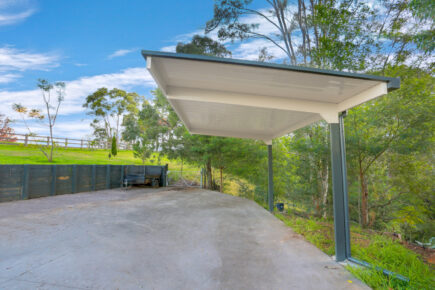When designing an outdoor patio space, one of the most important decisions is choosing the right patio roof. Not only does it provide shelter, but it can also help regulate temperature and transform the aesthetics. One of the biggest considerations is whether to go with an insulated patio roof versus a non-insulated option. But what exactly are the differences, and which is better for your needs?
What Does Insulation in a Patio Roof Mean?
Insulation refers to materials built into the roof structure that provide a thermal barrier between interior and exterior temperatures. Insulated patio roofs contain materials like polystyrene panels that create a layer of insulation. This helps minimise heat transfer through the roof.
Non-insulated roofs have no special insulation added—just the basic roof decking material. While cheaper, these roofs offer less temperature regulation.
Benefits of an Insulated Patio Roof
Temperature Regulation
One of the biggest perks of an insulated patio roof is superior temperature control. The insulation acts as a barrier to prevent heat gain in summer and heat loss in winter. This helps keep the space comfortable in both warm and cool conditions. No more sweltering summer days or chilly winter nights!
Noise Reduction
In addition to moderating temperature, insulation also dampens exterior noise from rainfall and other weather conditions. By muffling this ambient noise, an insulated patio roof creates a more peaceful environment.
Energy Savings
By minimising heat transfer, an insulated roof also reduces your energy costs. You’ll spend less on cooling the area in summer and heating in winter. This makes your space more energy-efficient year-round.
Aesthetic Appeal
Finally, insulated patio roofs simply look better too. The insulation gives a smooth, finished appearance from the interior side. This offers a cleaner, more pleasing aesthetic compared to a basic roof.
Benefits of a Non-Insulated Patio Roof
Lower Upfront Cost
The main benefit of a non-insulated patio roof is the lower upfront material cost. Skipping insulation saves on construction expenses. So if budget is a concern, a basic roof may be more appealing.
Quick Installation
You can also install a non-insulated roof much faster. With fewer materials to incorporate, the roof can go up quickly and easily. This also contributes to the lower cost.
Good for Temporary Use
A non-insulated roof works fine for a patio space that’s only used occasionally or during certain seasons. If you mainly want a basic overhead shelter that’s not occupied often, insulation may not be worth it.
Key Differences Between the Two Types of Roof
After considering the pros and cons, what are the key differences between insulated and non-insulated patio roofs?
Temperature Regulation – Insulated roofs provide noticeably better insulation against heat and cold. This makes them superior for maintaining comfortable temps.
Noise Reduction – Insulated roofs also excel at dampening exterior noise from weather and rainfall.
Energy Efficiency – The insulation in an insulated roof boosts energy efficiency significantly by reducing heating and cooling demands.
Upfront Cost – The main advantage of non-insulated roofs is their lower upfront material and construction cost.
Performance – Insulated roofs simply perform better overall in terms of comfort, noise reduction, and energy savings.
With this breakdown in mind, insulated patio roofs are often the better long-term investment.
The Takeaway
When choosing between an insulated and non-insulated patio roof, consider your budget, performance needs, and intended use of the space. Insulated roofs offer major benefits like enhanced temperature regulation, sound dampening, and energy savings. Though more expensive initially, the insulation is worth it for most homes to increase comfort and efficiency.
If budget is a concern, you only need basic overhead shelter, or the area won’t get much use, a non-insulated roof may suffice. Just keep in mind it provides less insulation against the elements.
For superior performance and comfort all year round, we recommend investing in an insulated patio roof. Proper insulation makes a dramatic difference in liveability and will increase your enjoyment of the patio for decades to come.





